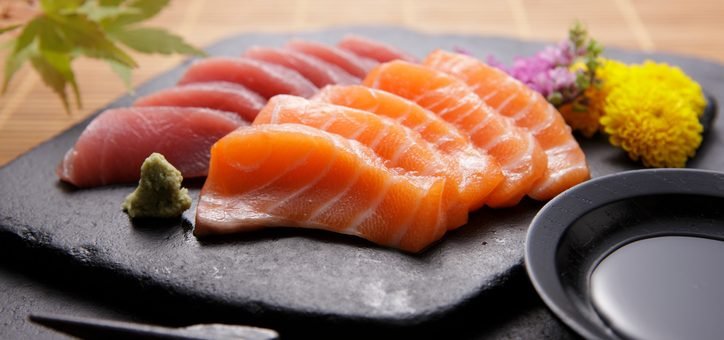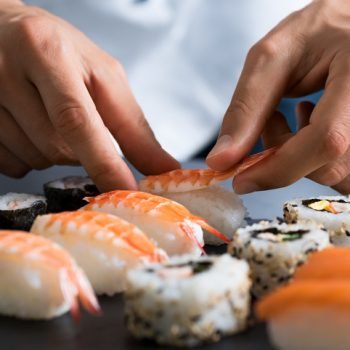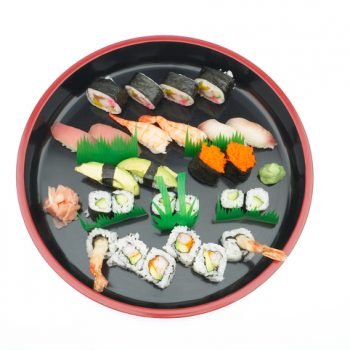
Ultimate Guide to the Different Types of Sashimi
- Posted by admin
- On March 6, 2017
- 0 Comments
- Sashimi
When it comes to the listings on a sushi menu, the presence of sashimi will raise the eyebrows of the uninitiated. “What is this?” they wonder, uncertain of what to expect even when the menu lays out the ingredients. Since we at Matsuhisa have taken the time to go into great detail on the types of sushi, it seems only fair to give sashimi equal treatment.
The Basics of Sashimi
Sashimi, much like sushi, is generally served raw. It is almost entirely meat, with garnish vegetables such as daikon to help give it some flavor and texture, as well as dipping sauces from basic soy sauce and wasabi paste to a citrus-based ponzu sauce.
Unlike maki rolls or nigiri, there’s no rice to be found with sashimi. Even in traditional sushi restaurants, however, there are exceptions. Octopus (tako), for example, is one type of meat that is better after having been boiled. Matsuhisa has been known to use tataki (pan searing) techniques on certain sashimi dishes to give customers different flavors and textures.
Playing With Fire
Since Chef Nobu is always willing to try new things, and likes to make his customers happy, it’s inevitable that he would come up with distinct twists on classic recipes. One of his earliest customers in California proclaimed that she didn’t like raw fish. Wanting to please the customer, Chef Nobu took the sashimi, poured some hot oil over it and flash seared it. Not only did the customer enjoy the dish, it also marked the first instance of Chef Nobu’s “new style sashimi.” Between this and tataki-prepared dishes, Matsuhisa delivers many different types of sashimi to please all palates.
School of Fish
What kind of meat makes for the best sashimi? Many varieties, if you have some imagination. One of the long-time favorites on the menu has been hamachi (yellowtail) and jalapeno sashimi. More traditional fish such as unagi (freshwater eel) and uni (sea urchin) work well as traditional sashimi dishes, but tataki seared maguro (tuna) is quite delicious on its own as well as in our Sashimi Salad.
If you’re starting to get hungry at the thought of trying out sashimi, whether classic or “new style,” come down to Mastuhisa, a Japanese restaurant in Denver that will be sure to show you what you’ve been missing.


